Top 5 Trends Transforming the Luxury Retail Space
- 3rd Sep 2020
- 3101
- 0

Traditional to Charismatic
Over the years the Luxury retail space has changed through different transformations and experiments. Some bad experiences and uncertain future of luxury retail has raised a lot of questions. Behind this concern lie the questions of how effective luxury retail strategy is created, who is the creative persona at the heart of luxury organizations (McCracken,1989; Stern,1994; Weierter,2001), and what role that creative persona plays in the effective staging of luxury retail (Wæraas,2007). Luxury Retail is not the objects that furnish us with a definition of luxury but the relationships that develop with regards to them. Consumption of luxury is often discussed in terms of aspirations to elite status or to assert symbolic dominance over others. Moreover, retail marketing systems organize and govern not only access to luxury ( For e.g., DeBeers’ distribution strategy that keeps diamonds artificially scarce, Dubois and Duquesne,1993), but the ways in which luxury is materialized and expressed cultural contexts (Kapferer and Bastien,2009).
The challenge for luxury retail in modern times has been to transform from ‘Traditional to Charismatic Luxury’. According to Weber (1915/1996), charisma is “an exceptional quality that a man has (regardless of whether that quality is real, presumed or faked)”. For a long time, the legitimacy of luxury relied on traditional qualities: the rarity of materials and the finesse of craftsmanship (Roche,1989; Sicard,2005), and some luxury brands continue to rely on these criteria, for example, Hermès. Luxury retail has been about branding initiative and experience based on a detailed representation of moral and social values, presented in an extensive and intensive manner through the physical environment, and linked to actual moral action in the lives of involved consumers.
Luxury Retail is changing with times and luxury brands need to change how they perceive retail from a consumer’s point of view. Luxury is not accepted by consumers today, to an extent with whatever luxury brands provide with but what consumers demand and how luxury brands cater to it. Luxury consumers want different experiences where they can resonate themselves with the brand itself and have something to remember. Luxury brands have listened and have catered to these needs. Let’s have a look at some of the trends that have been adopted by Luxury brands to reshape the Luxury retail space.
5 Trends Transforming Luxury Retail
1. Phygital Retail
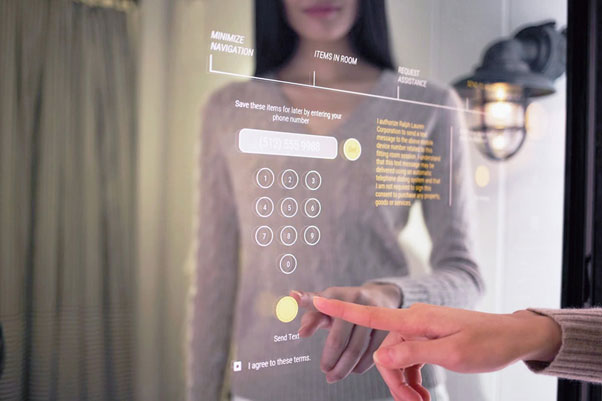
Luxury retail concept is moving more towards from physical to digital. As more and more customers prefer the convenience of digital shopping and mail-order delivery, many physical retailers are seeing foot traffic plunge (Kapner,2016). Investing in digital partners who truly understand the brand’s tone of voice contributes to the better communication of the overall brand vision. Strategic partnerships that complement in-house competencies can be of great assistance in creating exciting customer experiences. Luxury brands have become smarter and are reducing stress of Luxury purchase decisions by giving more comfort for luxury consumers by going digital. Software developers like SAP have started working to develop AI with ‘Harrods’ to have an in-store screen personalised recommendations of products for its consumers. Burberry started a digital campaign called the ‘Art of Trench Microsite’ that transforms the streets of the world to runways by getting users to submit pictures in their favourite Burberry trench coats, or Burberry Bespoke that enable the heights of personalization. Burberry has also teamed up with snapchat to showcase Mr. Burberry, their men’s grooming and accessories collection. Luxury brands have really gone strategic with their digital presence by having engaging campaigns on social website and having strategic collaborations with omni channels to reach a broader audience. As stores are expensive to run, is it fair to say that with rising operational costs, digital retail is the new way forward?
2. Experiential Retail
Several luxury brands are catching on to this idea and opening experience-based locations that carry zero investment of stock. Canada Goose, opened a shop in Toronto where customers can try on the brand’s jackets in a simulated snow storm. Customers can buy a coat in the shop, but ordering is done via an iPad and it’s shipped right to that customer’s home because there is no actual stock for sale in the shop. Luxury car brand Land Rover (JLR) has ‘The Land Rover Above and Beyond tour’ experience where consumers who are looking to purchase their product can test drive their cars in amazing ways by going on slope terrain areas or off-road experiences. This gives the consumers to test the cars to its absolute limit. It is like a day out aimed at giving consumers the ultimate driving experience and a way to connect with the brand itself. Millennials are believed to buy into luxury experiences more than luxury products itself. Luxury brands like Armani, BVLGARI have branched into luxury experiences partnering with hotel Brands and establishing Armani Hotel in Burj Khalifa, and BVLGARI Hotels by Marriot in London, Dubai, Milan, Bali respectively. BVLGARI and Armani have used hotels as a way of showcasing their limited products with a boutique store. Experiential retail is really becoming an extension of Luxury brands and it really seems to hold a bright future ahead.

3. Pop-Up Retail
The concept of Pop-Up retail has emerged in the last decade. Pop-Up stores are very minimal in operational costs and it can be a strategic way to target consumers and reinvigorate brand awareness. Pop-Up stores are usually not permanent set ups but more of a temporary buzz.
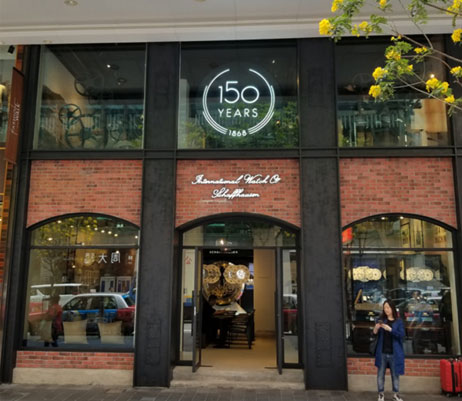
Pop-Up stores creates a more casual vibe and has the concept of ‘Luxury for all’ whereas in previous years some of the luxury brands have been accused of the way they treat consumers when they enter their flagship stores. CHANEL’s ‘Coco Game Club’ Pop-Up store was set up on a rooftop in Paris for a few weeks to showcase its latest collection. The store had amazing in-store experiences like Virtual Games, an electric atmosphere with lie DJ’s and Influencers. Famous swiss watchmakers IWC Schaffhausen celebrated its 150th anniversary in style by opening a 2-storey pop-up store in Hong Kong’s busy causeway Bay. Interactive zones, with a vintage and industrial feel, the store was divided into several areas tracing the historical evolution of the brand, while using several models of the watches.
4. Zero Inventory Retail
Due to Covid-19 crisis, Luxury brands have faced the issue of drop in sales due to restricted travelling, by more than 50% according to sources. This had led luxury brands to realise that a glut of excess inventory is very likely. Zero inventory retail strategy helps Luxury brands to tackle the problems of inventory. It is a concept where consumers can walk into a physical store and can browse through products in the store physically and see them whilst placing an order online. This would be beneficial, as less products in the store require smaller formats, it would mean a huge rental savings for the retailers and the Luxury brands. As it has been getting financially difficult for Luxury brands to operate all their stores in monumental areas, ZIS (Zero Inventory Strategy) can prove vital to cater to the world of physical and digital experience at the same time. Though a few luxury brands like Louis Vuitton, Burberry, Dior are catering to these needs with similar concepts of pop-up stores, there hasn’t been a proper execution of this strategy. It is a strategy for the future as ZIS is a ‘All win’ situation for the retailers and the consumers. It is a mixture of physical experience and digital presence which is a match made in heaven.
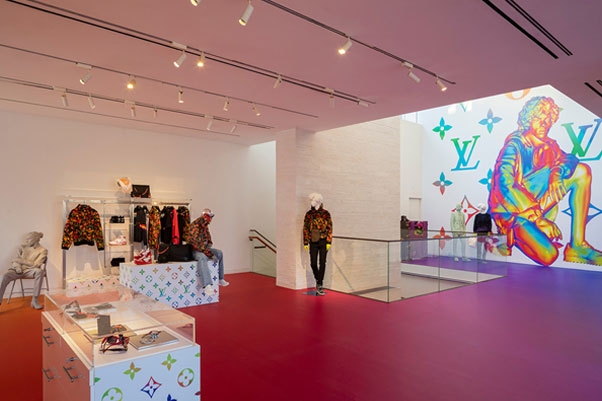
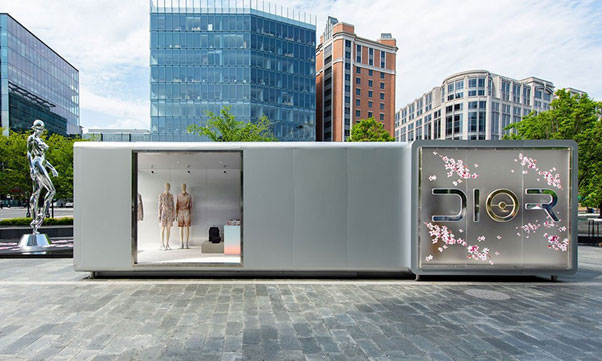
5. Luxury partnership Retail
A few years ago, luxury brands were within reach for the rich or HNWI (High net worth individuals). As luxury consumption pattern has been redefined repeatedly, luxury is perceived in a way, where anyone who appreciates and adores luxury is a consumer and not just consumers who are looking to buy Luxury products. As luxury brands are not gaining much traffic in their physical stores, one way to revive the traffic would be to get into partnerships and collaborations which helps with the overall circulation and image of corporate social responsibility for luxury brands. Burberry was one of the first brands to team up with a pre-owned luxury retail website ‘The Real Real’. Consumers who have purchased products on ‘The Real Real’ have a unique advantage of access to special promotions and products at the Burberry store. This indirectly is helping luxury brands to drive traffic to their stores. Though many would argue about these partnerships as it could defame the brand’s image. This strategy is an excellent way of attracting Millennials as it is not easy to gain their attention. Though many brands have got into such partnerships, traditional Luxury Brands are very pessimistic about such strategies. This kind of partnership will attract new consumers and create a sense of ‘Luxury for all’.
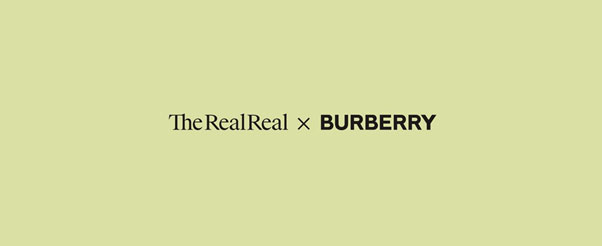
Luxury Retail has always been a difficult space for luxury brands to master. It has been redefined constantly by consumers purchase intentions. It shows that luxury has changed drastically over the years, and that the power has shifted from luxury brands to consumers, an ideology which never existed in luxury before. If Luxury Brands can create the perfect blend of balance between experience and create the feeling of rarity for their products, Retail luxury will always be perceived with a positive mindset. Luxury retailers need to keep on innovating themselves with changing demand to be able to stay alive in the retail space. Surely Luxury Retail’s future is one to be excited for.
 Prithvi Ramesh
Prithvi Ramesh


Comments
No comments yet.
Add Your Comment
Thank you, for commenting !!
Your comment is under moderation...
Keep reading luxury post